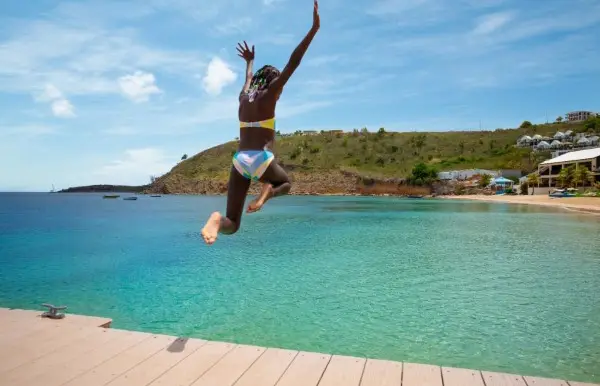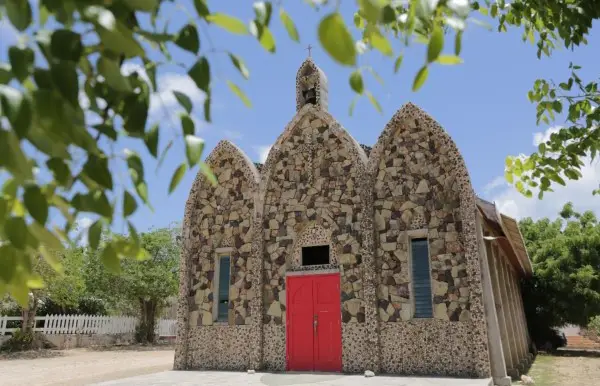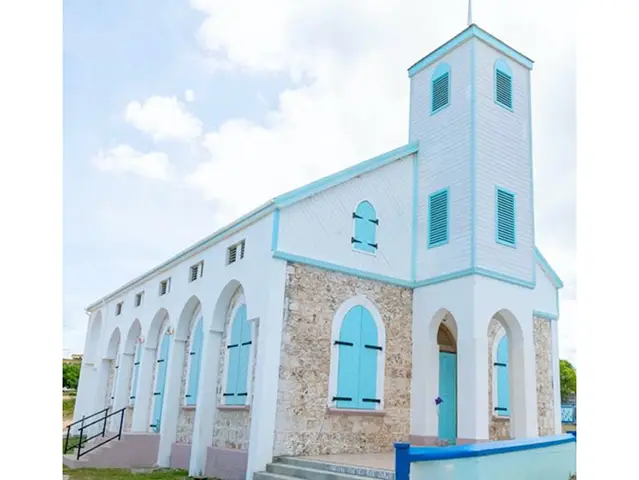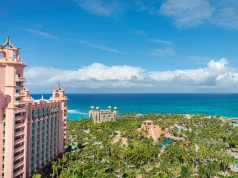
Quiet and secluded Anguilla – the northernmost of the Caribbean’s Leeward Islands – packs an incredible amount of charm into a slice of tropical paradise that is only 26 km long. The destination’s compact size makes its many luxurious properties, inventive eateries, and picturesque beaches easily accessible by car, bike, and even on foot. Once the charm of lazing around on some of the Caribbean’s best beaches begins to pall, slip on your favourite runners and take a walking tour of some of Anguilla’s historic buildings. Whether you opt for a self-guided or curated tour, Anguilla’s fascinating culture comes alive through its storied buildings – and all you need to experience it is a comfortable pair of shoes!
Below, we break down a few key spots you’ll want to visit when planning your walking tour of Anguilla. You can see these landmarks in the order we present them here or chart your path: the beauty of a walking tour is the freedom to enjoy the sights at your own pace.
The First Leg: History in The Valley

Our first destination is the St. Gerard Roman Catholic Church located in The Valley, the nation’s capital. Although the current building only dates back to 1966, when it replaced an earlier chapel which was destroyed in a hurricane, it is noted for its unique architectural design: a stone fascia shaped like a ship’s hull. The Church is a focal point for Anguilla’s sizable Catholic community and makes for a natural first stop on our tour due to its central location.

Nearby, we go much further back in time at the historic Wallblake House. Constructed in 1787, Wallblake House is now the oldest surviving plantation house on the island. The name is thought to be a corruption of Will Blake, the original sugar planter owner. Although destroyed by invading French forces in the late 1790s, it was later rebuilt and more recently refurbished in 2004. The elegant and decorative designs in the original building have been fully retained and restored. The last private owner donated the house to the Catholic Church and today it is home to the rector of St. Gerard. Tours of the entire complex of buildings including the kitchen, stable and workers’ quarters and a museum annex can be arranged on request.
The Second Leg: The Olde Valley

Ebenezer Methodist Church has a long and rich history. The original chapel was built in 1830 by enslaved Africans, as their own place of worship. The membership at the time was 300 enslaved Africans, 40 free Africans and 10 Europeans. The construction was under the direction of the Rev Henry Britten. Britten had replaced Rev John Hodge, who introduced the Methodist witness to Anguilla and had built the first wooden Chapel there in 1815 adjacent to the new building.
Over the years the edifice suffered damage by fire and numerous hurricanes but was always lovingly restored by its faithful congregants. The last devastation was by Hurricane Irma in 2017. The repair work then included new external columns to strengthen the old limestone walls and support a new roof. The renovated chapel was dedicated on 25 July 2019, which was the anniversary of its dedication in 1830.

We finish our starting circuit at Hodge’s Homestead – dating back to the 1920s. This exquisite wooden house was fashioned without the use of cement and is still protected by a stone wall. The Dutch inspiration is unmistakable in both architecture and colour: you’ll spot the yellow exterior and red roof from quite a distance away!
The Olde Valley has its own historic plantation house, built in the 18th century when it was known as The Warden’s Place, and it just might be the oldest building still standing on the island. Recently, it has operated as a bakery and a restaurant known as Koal Keel Restaurant but is currently closed. The interior is noted for its attractive whitewashed walls and contrasting mahogany trim.
Climbing to Crocus
After stopping for fresh seafood or a sizzling BBQ lunch in The Valley, continue your tour by walking west to Crocus Hill. While this may be the highest point on the island, high is indeed a relative descriptor in traditionally flat Anguilla – it only reaches a maximum elevation of 214 ft. These “heights” hold more than their fair share of history, however, making it a must-visit for culture-loving nomads.
The recently restored Old Court House, on Crocus Hill, is the only remaining 18th-century government building on the island. In 1955, it was destroyed by a hurricane and further damaged by another in 1960. However, a generous donation by two Americans who have been visiting the island for over 30 years has enabled the structure to be returned to its original splendour. The traditional building was reinforced from the inside but clad in wood both inside and out to replicate its former design and erected on the ruins of the older stone building, which once held the island’s jail.
The Curated Experience: Going on a QUEST
If you’d prefer a more structured adventure – or perhaps just the insightful perspective of an expert Anguillian guide – a Valley Walking Tour with Quest Experiences comes highly recommended. The Valley Walking Tour is a 1.5-hour experience covering points of interest (and plenty of tasty local treats!) within The Valley. Beyond the sites we spotlight above, you’ll discover The Old Valley Boy’s School, The People’s Market, a cotton factory, and more.
QUEST was founded in 2020 by two young Anguillians who saw a need to create immersive ways for people to experience the character of the island. Their success is measured by winning the 2022 Outstanding Youth in Entrepreneurship Award.
Make sure to leave room in your suitcase for flip-flops and running shoes on your next Anguilla vacation. You can learn more about the destination and its compelling history at https://ivisitanguilla.com/.





